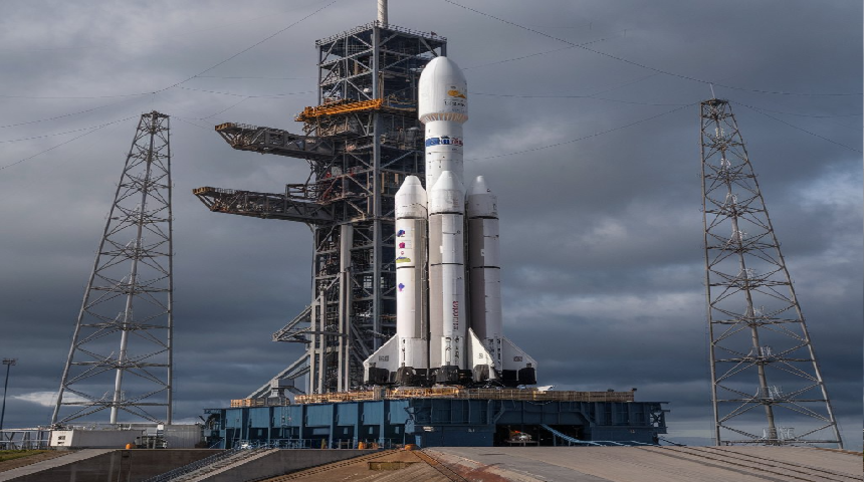AI Impact Analysis on the Rocket and Missile Industry
Artificial intelligence is rapidly transforming the rocket and missile industry, bringing a wave of technological advancements that span from design and manufacturing to autonomous targeting and real-time decision-making. As geopolitical tensions rise and the race for strategic superiority intensifies, AI is becoming a core enabler of next-generation propulsion systems, smart guidance technologies, and agile missile defense frameworks. This marks a shift from traditionally mechanical and deterministic missile systems to intelligent, adaptive, and software-defined capabilities.
In the missile segment, AI is playing a critical role in enhancing precision strike capability through smarter guidance, navigation, and control (GNC) systems. Modern missiles are being equipped with AI-powered image recognition, target discrimination, and trajectory correction tools that allow them to dynamically adjust course based on real-time environmental feedback or changing threat conditions. These features significantly improve strike accuracy and reduce collateral damage in both tactical and strategic operations.

For hypersonic and maneuverable re-entry vehicles, where speeds exceed Mach 5 and decision time windows are extremely compressed, AI is vital for processing sensor data and autonomously making navigation choices during flight. This allows the weapon to evade interception systems and adapt to unpredictable scenarios in near real time, giving it a tactical edge in contested environments. Similarly, anti-missile defense systems are leveraging AI to track, classify, and intercept multiple incoming threats with increased accuracy and reduced human latency.
Request AI Impact Analysis on Rocket and Missile Industry : https://www.marketsandmarkets.com/pdfdownloadNew.asp?id=203298804
AI is also revolutionizing launch vehicles used in both civil and defense contexts. In the rocket industry, companies are using AI and machine learning to optimize engine performance, fuel mixture control, and trajectory shaping. AI enables predictive diagnostics during flight, which can autonomously adjust rocket parameters for in-flight corrections or aborts. In reusable rocket systems, AI plays a crucial role in automated landing procedures, adaptive thrust control, and precision recovery, reducing cost per launch and increasing reliability.
In missile defense architecture, AI is being integrated into layered sensor networks and command systems to manage increasingly complex threat landscapes. Machine learning algorithms sift through data from radar, infrared, and satellite feeds to identify launch events, track missile trajectories, and prioritize threat responses. These AI-driven capabilities are essential to defend against saturation attacks and hypersonic threats that overwhelm traditional command structures.
From a development perspective, AI is accelerating the design and testing cycles of rocket and missile systems. Through generative design, simulation-driven engineering, and AI-powered digital twins, manufacturers are able to model, test, and refine systems with greater speed and accuracy. This reduces time-to-deployment and enhances the performance and safety of missile platforms under various operational conditions. In addition, AI-based materials analysis supports the creation of lighter, stronger components that increase range, maneuverability, and survivability.
Strategically, nations are investing heavily in AI-integrated missile systems as part of next-gen deterrence strategies. The emphasis is shifting toward intelligent, networked weapon systems that can share information, adapt to adversarial defenses, and operate in electronic warfare (EW) environments. AI also supports autonomous targeting and mission planning, where missile systems analyze battlefield data and select engagement profiles with limited or no human input—raising both strategic advantages and ethical considerations.
In commercial rocketry, AI is streamlining manufacturing and launch operations. Companies like SpaceX and Rocket Lab utilize AI for launch pad automation, trajectory planning, and telemetry analysis. AI further supports satellite deployment precision, ensuring that payloads are released into their intended orbital slots, even in rideshare missions with diverse orbital parameters.
The convergence of AI with the rocket and missile industry signals a paradigm shift where weapons and launch platforms evolve from rigid, preprogrammed systems into intelligent, adaptive assets. As nations race to master AI for propulsion, guidance, and mission execution, the industry will increasingly be shaped by those who can fuse software intelligence with aerospace engineering at scale.
Related Report :
GET A FREE SAMPLE
This FREE sample includes market data points, ranging from trend analyses to market estimates & forecasts. See for yourself.
SEND ME A FREE SAMPLE





